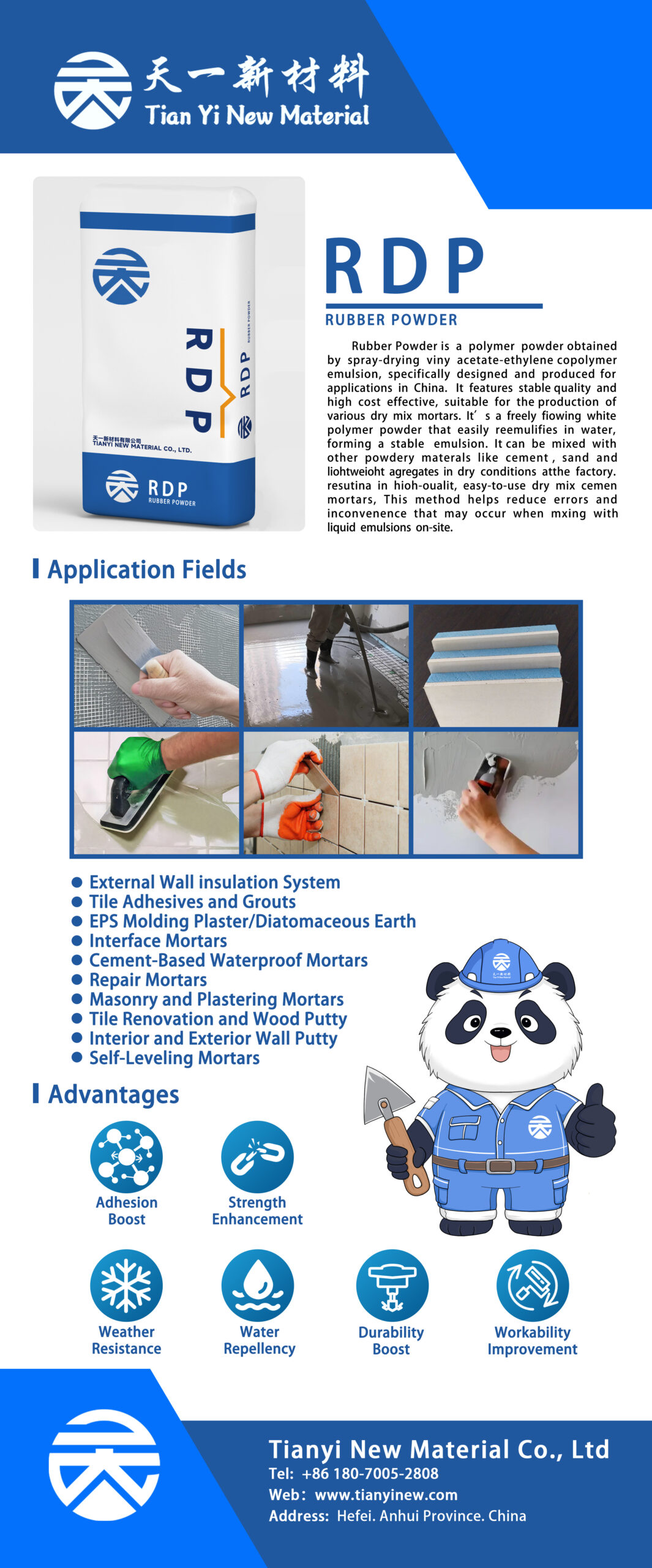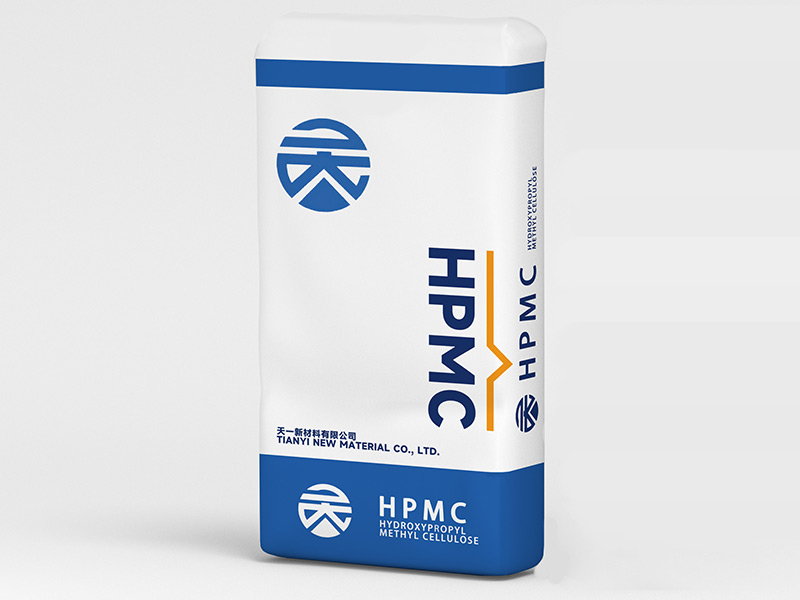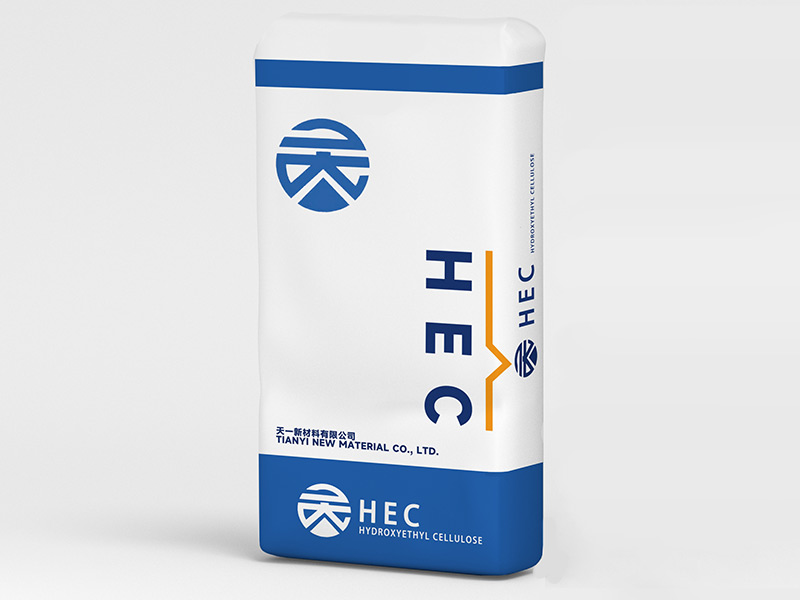
Redispersible latex powder has high bonding capacity and unique properties, and its application range is extremely wide: tile adhesives; bonding mortar for external wall insulation systems; finishing mortar for external wall insulation systems; tile grouting agents; self-leveling cement mortar; interior and exterior wall flexible putty; flexible crack-resistant mortar; polymer powder polystyrene particle insulation mortar; dry powder coatings; polymer mortar products with high requirements for flexibility. Mortar with redispersible polymer powder has the following advantages:
1. Good bonding performance to different substrates. Polymers act as the second binder in mortar, complementing inorganic binders such as cement. The two cementitious material systems, cement and redispersible polymer powder, each play their own advantages, resulting in a good complementarity of mortar performance and thus improving the bonding performance of mortar. The reasons why redispersible polymer powder improves the bonding performance of mortar may include the following:
① Polymers form a polymer film with high bonding strength between cement paste and aggregates, and block the pores in mortar. Cement hydration and polymer film formation occur simultaneously, eventually forming an interpenetrating network structure of cement paste and polymer film.
② Polymers with reactive groups may chemically react with silicates on the surface of solid calcium hydroxide, improving the bonding between cement hydration products and aggregates, thereby enhancing the bonding performance of mortar to different substrates.
③ The weakest link in mortar is the interface between mortar and cement paste, which becomes a transition zone. The transition zone is a special area where shrinkage cracks form and lead to loss of bond strength. If mortar is subjected to stress, cracks are most likely to occur in the transition zone. Adding redispersible polymer powder to mortar, the polymer film formed on the surface of mortar particles bridges the mortar and the substrate, reducing microcracks at the interface between mortar and cement paste, healing shrinkage cracks, and thus increasing the bond strength of mortar. Moreover, the tensile strength of the polymer film is more than 10 times that of ordinary mortar. 2. Good water retention of fresh mortar. The hydration process of cement is relatively slow. If cement cannot be in contact with water for a long time, it will not continue to hydrate, thus affecting the development of later strength. John Schultz simulated the typical summer west wall situation and used 10mm thick dry-mixed mortar repair mortar on a concrete slab. The test showed that the mortar without polymer powder modification failed, while the polymer-modified mortar achieved higher strength than the 28-day standard curing strength. The reason is that the polymer powder improved the water retention capacity, increasing the later strength of cement. On the other hand, small polymer phases formed in the mortar, enhancing the bond strength.
3. Improving the workability of fresh mortar. After adding redispersible latex powder to dry-mixed mortar, the workability of mortar is greatly improved. This is mainly due to the following reasons:
① When redispersible latex powder is mixed with mortar, the polymer particles are coated with water-soluble protective colloids, which can prevent irreversible agglomeration of polymer particles and create a lubricating effect between particles. Polymer particles can be uniformly dispersed in the cement paste, and these dispersed particles can act like "ball bearings" to allow the components of mortar to flow independently, thereby improving the workability of mortar.
② Redispersible latex powder itself has a certain air-entraining effect. The air-inducing effect of redispersible latex powder gives mortar compressibility, making it have good workability. In addition, the presence of small air bubbles also plays a role like rolling bearings in the mixture, thereby improving the workability of the mixture.
4. The addition of redispersible latex powder to mortar improves its flexibility and crack resistance. After adding redispersible latex powder to mortar, both the flexural compressive ratio and tensile compressive ratio of the mortar increase significantly, indicating that the brittleness of the mortar is greatly reduced and its toughness is significantly enhanced, thereby improving the crack resistance of the mortar. The redispersible latex powder forms a film after losing water in the mortar, not only filling the defects and pores in the cement stone, but also interpenetrating the cement hydration products and aggregates to form a polymer network. Since the elastic modulus of the polymer film is lower than that of the mortar, the brittleness of the mortar is reduced. The flexibility of the mortar increases the maximum deformation limit at the time of mortar failure, allowing it to absorb the energy required for the expansion of defects and micro-cracks to the greatest extent, enabling the mortar to withstand greater stress before failure. In addition, the polymer film has a self-stretching mechanism, and the polymer film in the rigid framework formed by the cement hydration products in the mortar has the function of an active joint, which can ensure the elasticity and toughness of the rigid framework. The polymer film formed on the surface of the mortar particles has some pores on its surface, and the pore surfaces are filled with mortar, reducing stress concentration and allowing relaxation without damage under external force. The presence of high flexibility and high elasticity polymer regions also improves the flexibility and elasticity of the mortar.
- The addition of latex powder improves the wear resistance and impermeability of the mortar. Latex powder has a certain air-entraining effect. If the dosage of latex powder is too large, it will cause excessive air bubbles in the mortar, and the small air bubbles will connect with each other to form large air bubbles, which will overflow from the mortar body, reducing the air content of the mortar. Therefore, the dry apparent density of the mortar increases with the increase of latex powder dosage. The modified mortar has certain wear resistance and impermeability. The wear resistance of the mortar is particularly important for ground materials and is an important property of self-leveling floor materials.




